Effectively choosing points for electronic board setups hinges on understanding the board’s material, dart weight, and player preference to ensure optimal scoring and board longevity. This article will guide you through these critical considerations, including point types, installation, maintenance, en uiteindelijk, how to make the right selection for your specific needs.
⚠️ Still Using Pen & Paper (Of een schoolbord)?! ⚠️
Stap in de toekomst! De Dart Teller -app behandelt alle scoren, stelt kassa voor, en volgt uw statistieken automatisch. It's easier than you think!
Probeer de Smart Dart Teller -app gratis!Klaar voor een upgrade? Klik hierboven!
Understanding Electronic Dartboard Materials
The first step in choosing points for electronic board systems is understanding the material of your electronic dartboard. Most electronic boards are made of plastic, typically with small holes designed to register when a dart strikes. Different plastics have varying degrees of durability, and this influences the type of dart points that will work best.
- Plastic Boards: These are the most common type. They require points designed for plastic to avoid excessive wear and tear.
- Bristle Boards (with electronic scoring): These are less common but offer a traditional bristle feel with electronic scoring capabilities. They generally require standard steel tip dart points.
Using the wrong type of point can lead to premature damage, inaccurate scoring, and increased bounce-outs. Bijvoorbeeld, using steel tips on a plastic board will quickly damage the plastic, while using plastic tips on a bristle board will render the electronic scoring useless. Considering the material is crucial for preserving your board’s lifespan and ensuring consistent gameplay.
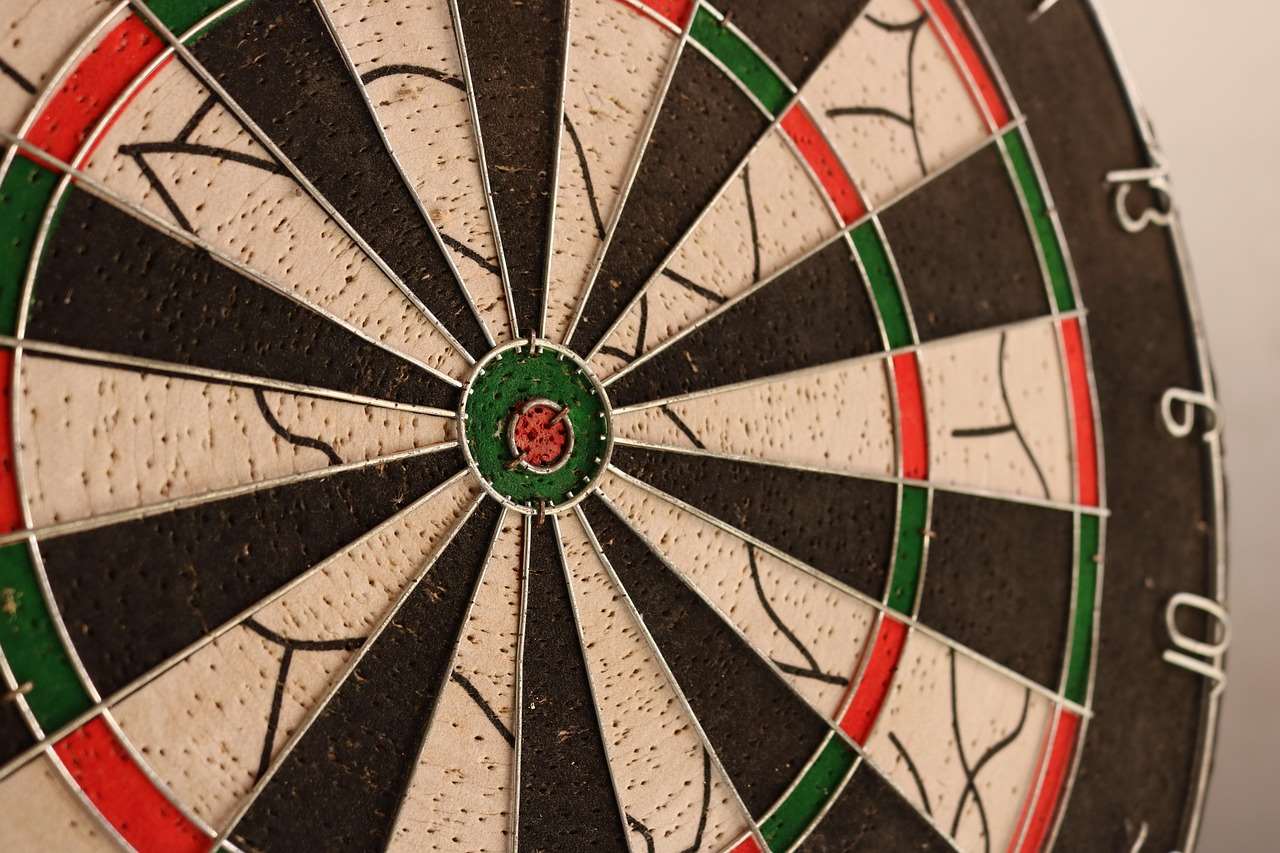
Types of Dart Points for Electronic Boards
Once you understand your dartboard’s material, you can explore the different types of dart points available. Soft tip darts are specifically designed for electronic dartboards. Here’s a breakdown:
- Standard Soft Tips: These are the most common and widely available. They are typically made of plastic and are designed to easily penetrate the holes in electronic dartboards.
- Cone-Shaped Tips: Some players prefer cone-shaped tips as they believe these reduce bounce-outs. The wider base of the cone helps guide the dart into the hole.
- Diamond Tips: These feature a diamond-shaped pattern on the tip, designed to improve grip and reduce slippage. Echter, some players find they can wear down the board faster.
- Threaded Tips: These tips are designed to screw more securely into the dart barrel, reducing the likelihood of the tip breaking or coming loose during play.
Dart point selection also depends on the weight of your darts. Heavier darts may require more durable tips or a different style to ensure they consistently stick in the board. It is important to Kies de beste Dart -apparatuur that suits your playstyle.
Dart Weight and Point Selection
De weight of your darts significantly impacts the type of points you should use. Lighter darts might be perfectly fine with standard soft tips, while heavier darts might require more robust options. Here’s a general guideline:
- Lighter Darts (16-18 grams): Standard soft tips are usually sufficient.
- Medium Weight Darts (18-20 grams): Consider cone-shaped or threaded tips for added durability.
- Heavier Darts (20+ grams): Opt for high-quality, durable soft tips or consider a point designed for heavier impact.
The goal is to find a balance where your darts stick consistently without causing excessive wear and tear on the board. Experimentation is key to discovering what works best for your setup and throwing style. Remember that choosing points for electronic board setups properly involves considering these factors together.
Installation and Maintenance of Dart Points
Proper installation and maintenance are crucial for prolonging the life of both your dart points and your electronic dartboard. Hier zijn enkele tips:
Installing Dart Points
- Use the Right Tool: Use a dart point tool to tighten or loosen points. Avoid using pliers, as they can damage the point or the dart barrel.
- Tighten Securely: Ensure the point is securely tightened, but avoid over-tightening, which can strip the threads.
- Check Regularly: Regularly check your dart points to ensure they are not loose.
Maintaining Dart Points
- Regelmatig schoonmaken: Clean your dart points regularly with a soft cloth to remove any debris or residue.
- Replace Worn Points: Replace worn or damaged points immediately to prevent bounce-outs and damage to your dartboard.
- Use a Point Sharpener (if applicable): If you’re using points that can be sharpened, use a dart point sharpener to maintain a sharp, consistent tip.
Regular maintenance not only improves the performance of your darts but also helps to protect your electronic dartboard from unnecessary wear. Don’t underestimate the importance of maintaining your equipment properly. This also plays an important role when choosing points for electronic board sets.
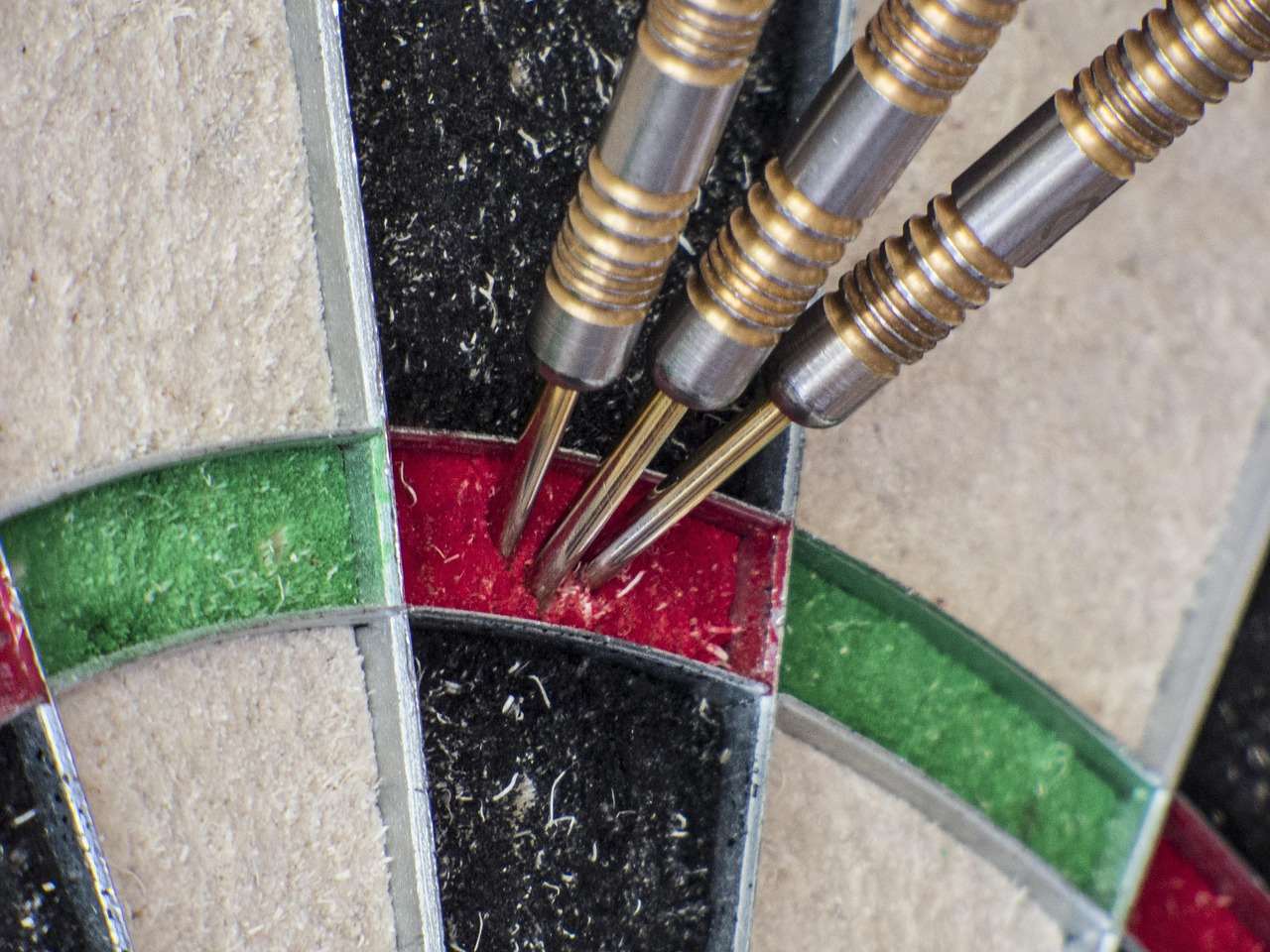
Minimizing Bounce-Outs
Bounce-outs are a common frustration for dart players. Selecting the right dart points can help minimize these occurrences. Here are some strategies to reduce bounce-outs:
- Choose the Right Point Type: Experiment with different point types, such as cone-shaped or diamond tips, to see which provides the best grip.
- Maintain Sharp Points: Keep your dart points sharp to ensure they penetrate the board effectively.
- Adjust Your Throw: Sometimes, bounce-outs are due to the angle or force of your throw. Experiment with different techniques to see if you can reduce bounce-outs.
- Ensure Proper Board Mounting: A securely mounted board will reduce vibrations that contribute to bounce-outs.
Minimizing bounce-outs not only improves your scoring but also reduces frustration and enhances your overall playing experience. Finding the right balance between point type, maintenance, and throwing technique is essential. By carefully considering these factors, you can drastically reduce bounce-outs and improve your game. Consider a Budget vs Premium Darts Compared to reduce the chance of bounce outs.
The Impact of Point Material on Board Longevity
The material of your dart points directly impacts the longevity of your electronic dartboard. Using the wrong type of point can significantly shorten the life of your board. Hier is hoe:
- Steel Tips on Plastic Boards: Using steel tips on a plastic board will quickly damage the plastic, creating larger holes and reducing the board’s ability to register hits accurately.
- Dull or Damaged Points: Using dull or damaged points can cause unnecessary wear and tear on the board, as they require more force to penetrate the plastic.
- Incompatible Materials: Using points made of materials that are too hard or abrasive can also damage the board over time.
To maximize the life of your electronic dartboard, always use soft tips specifically designed for plastic boards. Regularly inspect your points for damage and replace them immediately if necessary. Taking these precautions can significantly extend the life of your board and ensure consistent gameplay. A key aspect of choosing points for electronic board longevity is understanding the materials involved.
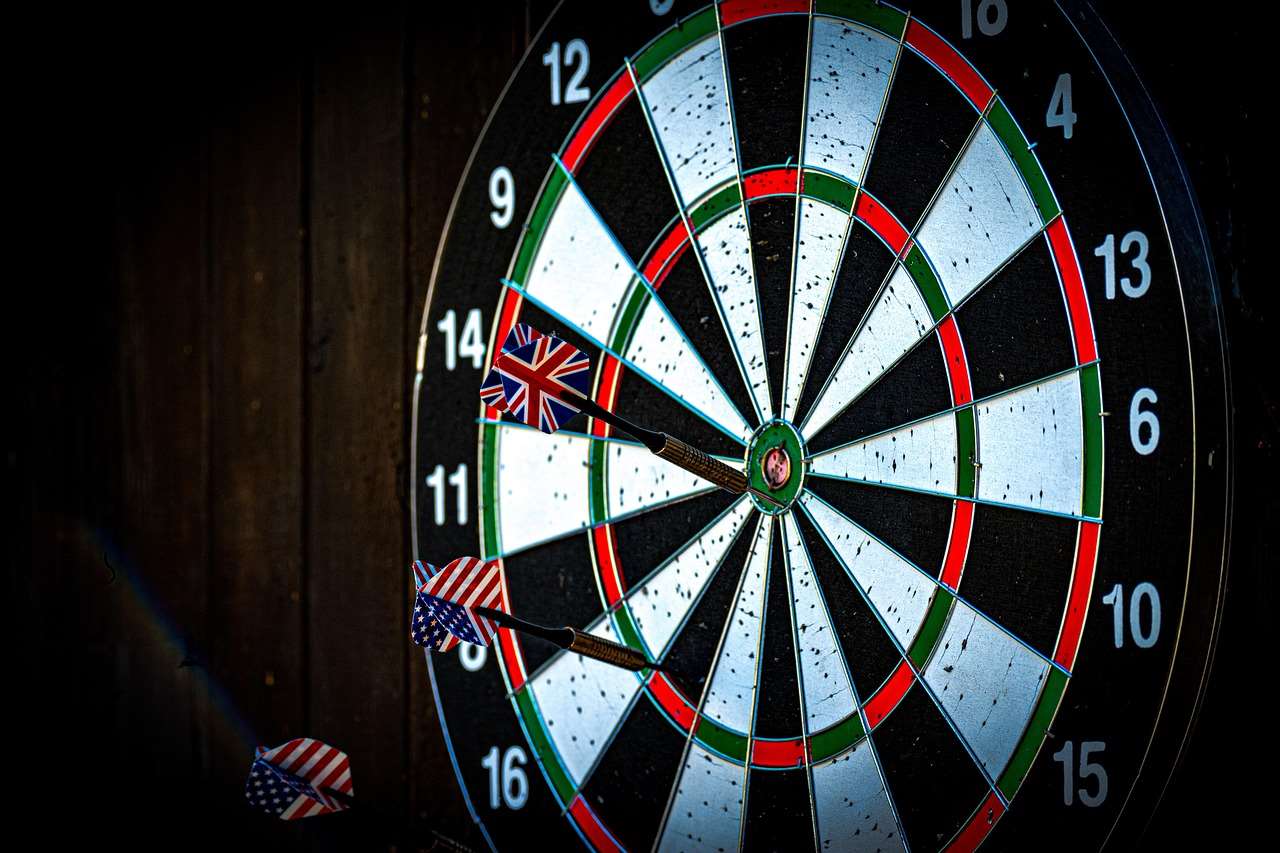
Budget-Friendly vs. Premium Dart Points
As with most sporting equipment, dart points are available in a range of price points. While it might be tempting to opt for the cheapest option, consider the long-term value. Here’s a comparison of budget-friendly vs. premium dart points:
- Budget-Friendly Dart Points: These are generally made of less durable materials and may wear down more quickly. They might be a good option for casual players who don’t play frequently.
- Premium Dart Points: These are made of high-quality, durable materials and are designed to withstand heavy use. They often feature advanced designs to reduce bounce-outs and improve grip.
Investing in premium dart points can save you money in the long run, as they will last longer and perform better. They can also improve your playing experience by reducing bounce-outs and increasing accuracy. If you’re serious about improving your game, consider investing in premium dart points. When choosing points for electronic board setups, Overweeg de Buying Guide Budget Premium Dart Sets as well.
Adapting Point Selection to Different Skill Levels
The optimal choice of dart points can also vary depending on the player’s skill level. Beginners might benefit from different points compared to experienced players. Here’s how to adapt your selection:
- Beginners: Focus on points that are easy to use and provide a good grip. Standard soft tips are a good starting point. Prioritize durability and affordability as beginners often experience more bounce-outs and accidental damage.
- Intermediate Players: Experiment with different point types to find what works best for your throwing style. Consider cone-shaped or diamond tips for improved grip and reduced bounce-outs.
- Advanced Players: Invest in premium dart points that offer the best performance and durability. Consider specialized points designed for specific playing styles or dart weights.
Adjusting your point selection to your skill level can significantly improve your game and enhance your overall playing experience. Don’t be afraid to experiment and try different options to find what works best for you. Uiteindelijk, choosing points for electronic board equipment is an individual decision based on personal preference and skill level.
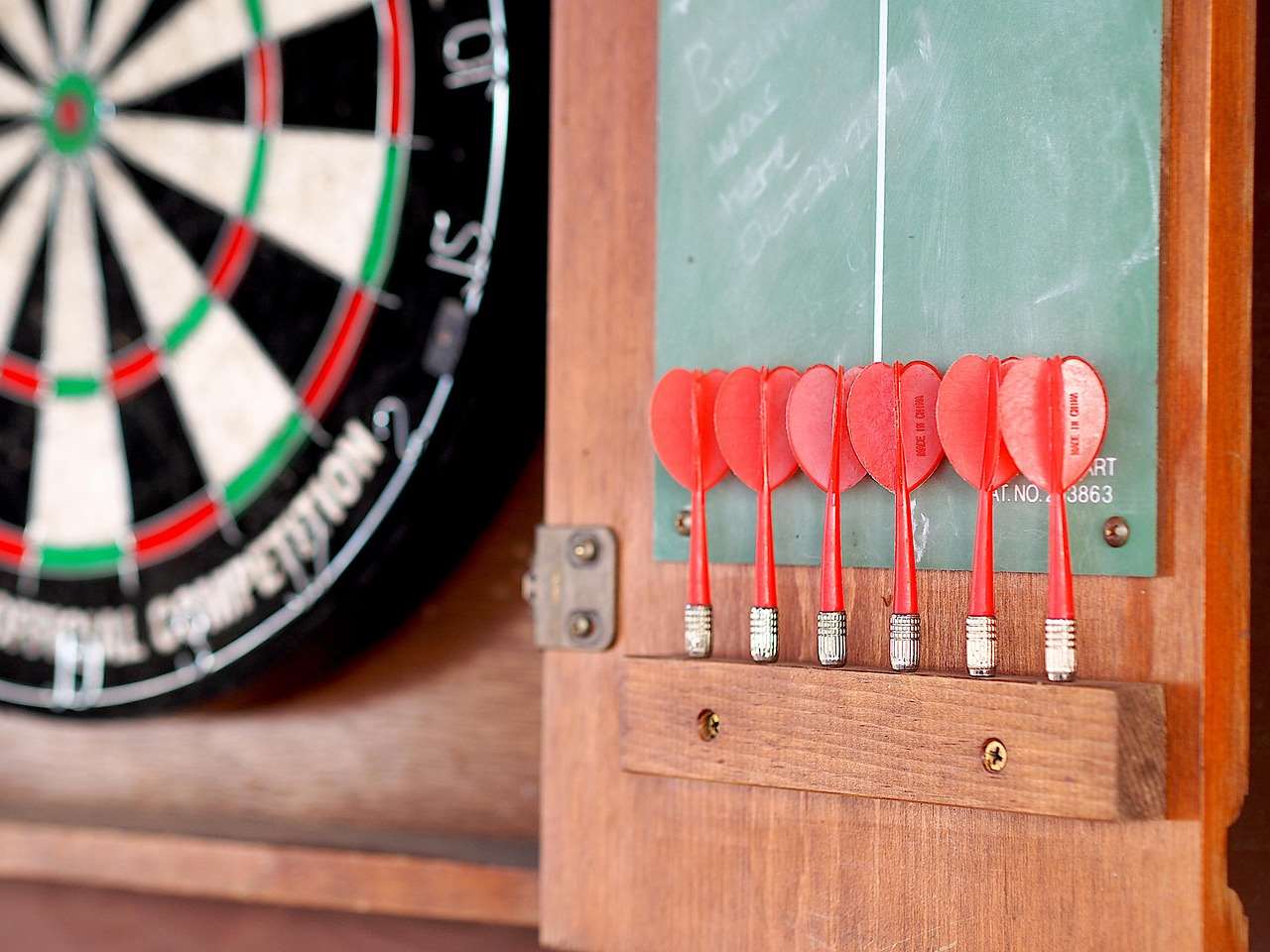
Troubleshooting Common Point Problems
Even with the best points, you may encounter occasional issues. Here’s how to troubleshoot some common problems:
- Points Breaking: This can be caused by using low-quality points, throwing too hard, or hitting the board at an awkward angle. Try using more durable points or adjusting your throwing technique.
- Points Coming Loose: This can be caused by vibrations or loose threads. Try using threaded points or tightening your points more securely.
- Bounce-Outs: This can be caused by dull points, an uneven board, or an incorrect throwing technique. Sharpen your points, ensure your board is properly mounted, and adjust your throw.
By understanding these common problems and their solutions, you can keep your dart equipment in good condition and minimize disruptions to your game. Always have spare points on hand so you can quickly replace damaged ones and get back to playing. Keeping your points in top condition ensures that when you are choosing points for electronic board, the decision can be fully evaluated and not limited by a faulty or damaged dart.
Beyond the Basics: Customizing Your Dart Setup
Once you’ve mastered the basics of dart point selection, you can start exploring ways to customize your setup to further enhance your performance. This can involve experimenting with different point lengths, materials, and designs to find what feels best for you. Some players even have multiple sets of darts with different point configurations for different playing situations.
Customizing your dart setup is a personal journey that requires experimentation and a willingness to try new things. Don’t be afraid to step outside the box and explore different options to find what works best for you. The goal is to create a setup that feels comfortable, natural, and maximizes your potential. To explore further, overwegen What Makes Darts Premium Quality so you can improve your game.
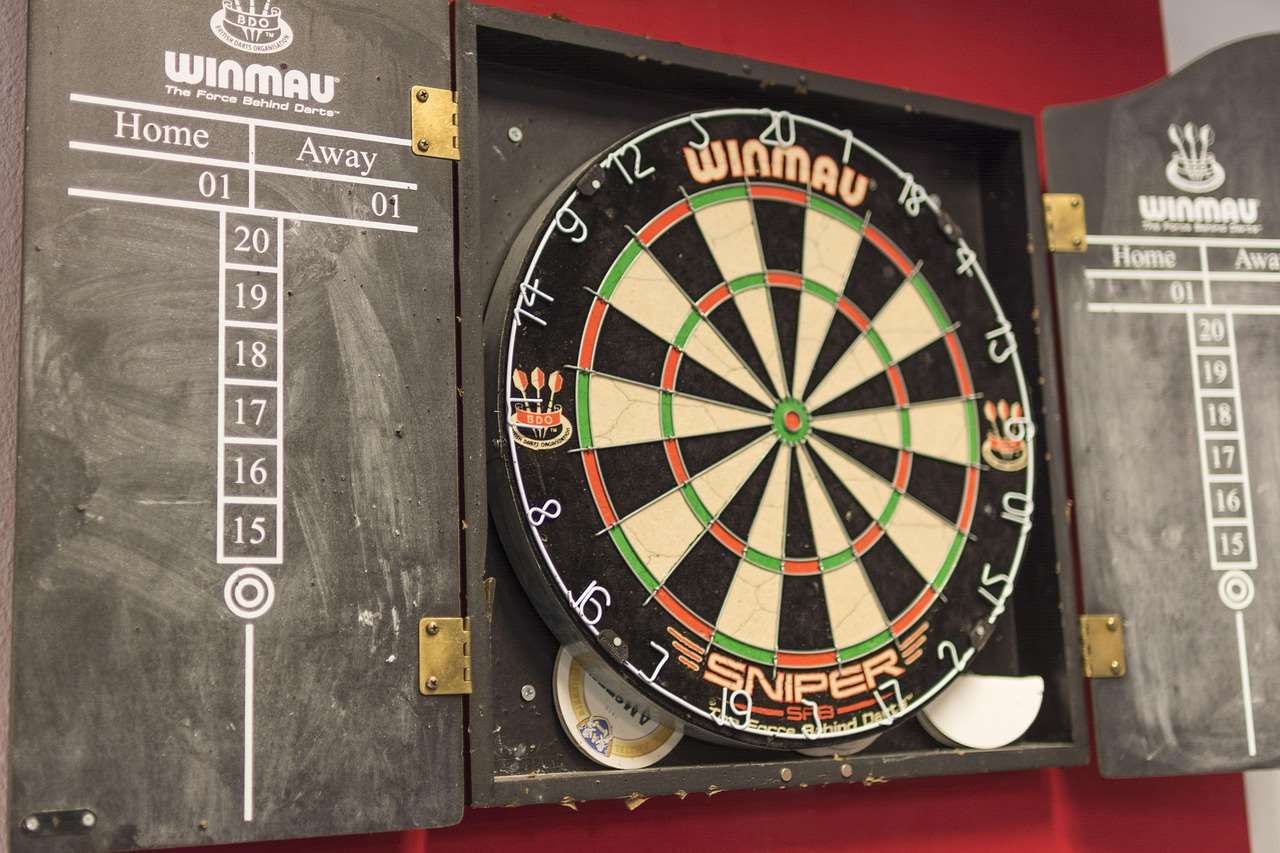
Conclusie
Choosing points for electronic board systems is a critical aspect of dart playing that impacts scoring, board longevity, and overall player experience. By understanding the board’s material, selecting the appropriate point type for your dart weight, maintaining your equipment, and minimizing bounce-outs, you can optimize your setup for peak performance. Whether you’re a beginner or an experienced player, the right dart points can make a significant difference in your game. Uiteindelijk, the best approach is to experiment with various options and discover what works best for your unique style and preferences. Nu, take the knowledge you’ve gained and head to your local dart supplier or browse online to find the perfect points for your electronic board! Happy darting!
Hoi, Ik ben Dieter, En ik heb Dartcounter gemaakt (Dartcounterapp.com). Mijn motivatie was geen darts -expert - helemaal tegenovergestelde! Toen ik voor het eerst begon te spelen, Ik hield van het spel, maar vond het moeilijk en afleidend om nauwkeurige scores te houden en statistieken te volgen.
Ik dacht dat ik niet de enige kon zijn die hiermee worstelde. Dus, Ik besloot om een oplossing te bouwen: een eenvoudig te gebruiken applicatie die iedereen, Ongeacht hun ervaringsniveau, zou kunnen gebruiken om moeiteloos te scoren.
Mijn doel voor Dartcounter was eenvoudig: Laat de app de nummers afhandelen - het scoren, de gemiddelden, de statistieken, Zelfs checkout suggesties - zodat spelers puur kunnen richten op hun worp en genieten van het spel. Het begon als een manier om het probleem van mijn eigen beginners op te lossen, En ik ben heel blij dat het is uitgegroeid tot een nuttig hulpmiddel voor de bredere darts -community.